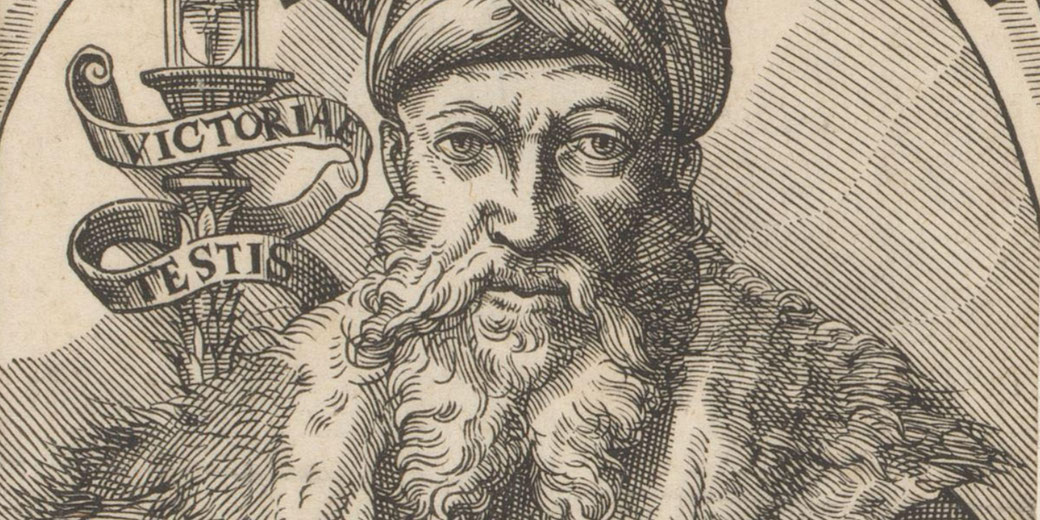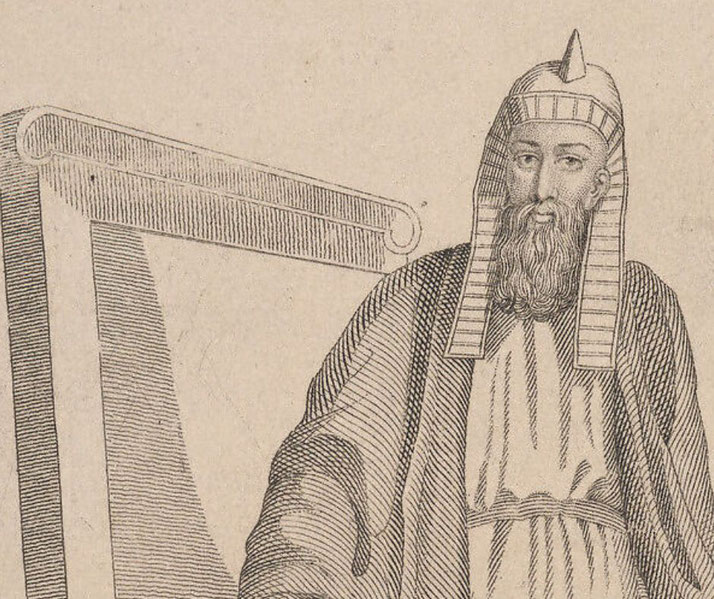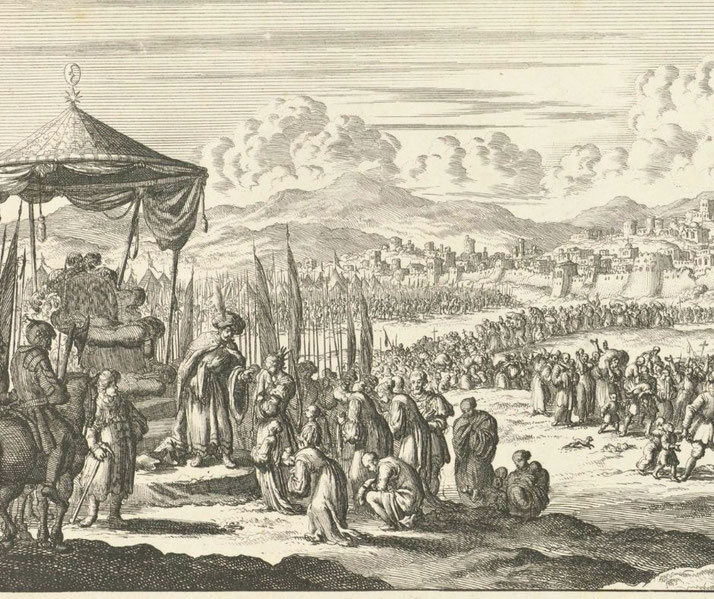How Saladin united the Muslim forces to defeat the Third Crusade

Saladin, revered as a hero in the Islamic world and respected by many in the West, carved a path through history as both a skilled diplomat and a relentless warrior.
His life was a series of audacious campaigns and shrewd negotiations, culminating in the legendary recapture of Jerusalem.
But who was the man behind the myth?
How did a Kurdish boy ascend to become the Sultan of Egypt and Syria, and what were the secrets to his enduring legacy?
Saladin's early life
Saladin was born in 1137 or 1138 in Tikrit, present-day Iraq, into a Kurdish family with a military background.
His father, Najm ad-Din Ayyub, and his uncle, Asad ad-Din Shirkuh, were influential figures, serving the Zengid dynasty.
His childhood was spent in Ba'lbek and Damascus, where the atmosphere was charged with the politics and military campaigns against the Crusader states.
It was here, in the heart of the Islamic world, that Saladin's education in religion and military tactics began.
The young Saladin's life took a decisive turn when his uncle Shirkuh, a military commander, took him under his wing during campaigns in Egypt.
These campaigns were part of a larger geopolitical struggle against the Fatimids of Egypt, who were allies of the Crusader states.
In 1169, after the death of Shirkuh, Saladin was appointed as the vizier of Egypt at the age of 31.

Saladin's rise to power
After the death of his uncle, Asad ad-Din Shirkuh, in 1169, Saladin found himself in a pivotal role as the vizier of the Fatimid court in Egypt.
His position was precarious, surrounded by a foreign culture and under the nominal authority of the Fatimid caliph.
However, Saladin quickly consolidated his power, eliminating rivals and gaining the loyalty of the military by demonstrating strong leadership and a clear vision for the Islamic world.
By 1171, Saladin had taken a decisive step, abolishing the Fatimid Caliphate and restoring Sunni orthodoxy in Egypt.
This move was not just a religious realignment; it was a political masterstroke that positioned Saladin as the defender of Sunni Islam and garnered him support from other Sunni rulers, including his former lord, Nur ad-Din, the Zengid ruler of Syria.
With the death of Nur ad-Din in 1174, Saladin saw the opportunity to expand his influence and began a campaign to assert control over Syrian territories.
By 1175, he had secured Damascus, and over the next decade, he would extend his domain to include Aleppo and Mosul, effectively uniting the Muslim front from Egypt to Iraq.
How Saladin recaptured Jerusalem from the Crusaders
The pivotal moment of Saladin's involvement in the Crusades came after he had solidified his control over Egypt and Syria.
In 1187, he launched a campaign against the Crusader states that culminated in the Battle of Hattin on July 4th.
This battle was a strategic triumph for Saladin, where he managed to capture the True Cross, a revered Christian relic, and decimate the Crusader forces.
The victory at Hattin was a prelude to Saladin's most famous accomplishment: the recapture of Jerusalem.
On October 2, 1187, after a 12-day siege, Jerusalem surrendered to Saladin's forces.
His capture of the city was notable for its relative bloodlessness, especially in contrast to the brutality displayed when the Crusaders initially took the city in 1099.
Saladin's treatment of the defeated Crusaders was marked by a level of clemency that earned him a reputation for chivalry and honor.

The fall of Jerusalem sent shockwaves through Christendom, leading to the Third Crusade (1189–1192), spearheaded by European monarchs including Richard the Lionheart of England.
This period was marked by a series of confrontations between Saladin and the Crusader armies, including the Siege of Acre and the Battle of Arsuf in 1191.
Despite Richard's victories, the Crusade ultimately failed to recapture Jerusalem, though it did succeed in securing a foothold in the region for the Crusaders.
Saladin and the Third Crusade
The Third Crusade, which began in 1189, brought Saladin into direct diplomatic engagement with the Christian world, particularly with Richard the Lionheart.
The two leaders, though often at odds on the battlefield, maintained a level of respect and open communication that was rare for the period.
They exchanged emissaries, and there were even moments of chivalry shared between the two, such as when Saladin sent Richard horses after the king lost his in battle, recognizing the valor of his opponent.
The diplomacy between Saladin and Richard culminated in the Treaty of Ramla in 1192.
This agreement allowed for the continuation of Christian pilgrimages to Jerusalem, a significant concession given the religious importance of the city.
The treaty also reestablished Crusader control over a strip of land along the coast, providing a base for further Crusader operations, while recognizing Muslim control over the interior, including Jerusalem.
Saladin's death and legacy
Saladin's death on March 4, 1193, came at a time when his presence seemed indispensable to the stability of the vast empire he had built.
His passing in Damascus was not only the end of a remarkable life but also the beginning of a period of uncertainty for the Ayyubid dynasty.
Despite his prowess as a unifier and a leader, Saladin's death revealed the fragility of the political structures he had established, as he left behind an empire that was extensive yet vulnerable to internal strife and external threats.
The question of succession was a pressing issue. Saladin had not appointed a successor, which led to a power struggle among his family members.
His sons were young and inexperienced, and his brother al-Adil was a potential contender for power.
The empire Saladin had so carefully constructed was divided among his sons, with each receiving a portion of the territory to govern.
His eldest son, al-Afdal, received Damascus, the most prestigious but also the most challenging to govern, while his other sons were given areas like Aleppo and Egypt.
The fragmentation of Saladin's empire was swift. His sons, lacking their father's military and political acumen, struggled to maintain the cohesion of the Ayyubid territories.
The internal divisions made the empire vulnerable to the ambitions of former allies and the opportunism of the Crusader states.
The unity that had been Saladin's hallmark was eroding, and the subsequent decades saw the Ayyubid dynasty embroiled in internal conflicts and external pressures that would eventually lead to its decline.
Despite the political turmoil that followed his death, Saladin's legacy endured. His successors continued to rule parts of the Middle East for many years, and the Ayyubid dynasty, even in its fragmented state, remained a significant force in the region.
The memory of Saladin's leadership and his vision for a united Islamic front against the Crusaders influenced generations to come.
What do you need help with?
Download ready-to-use digital learning resources
Copyright © History Skills 2014-2025.
Contact via email
With the exception of links to external sites, some historical sources and extracts from specific publications, all content on this website is copyrighted by History Skills. This content may not be copied, republished or redistributed without written permission from the website creator. Please use the Contact page to obtain relevant permission.





